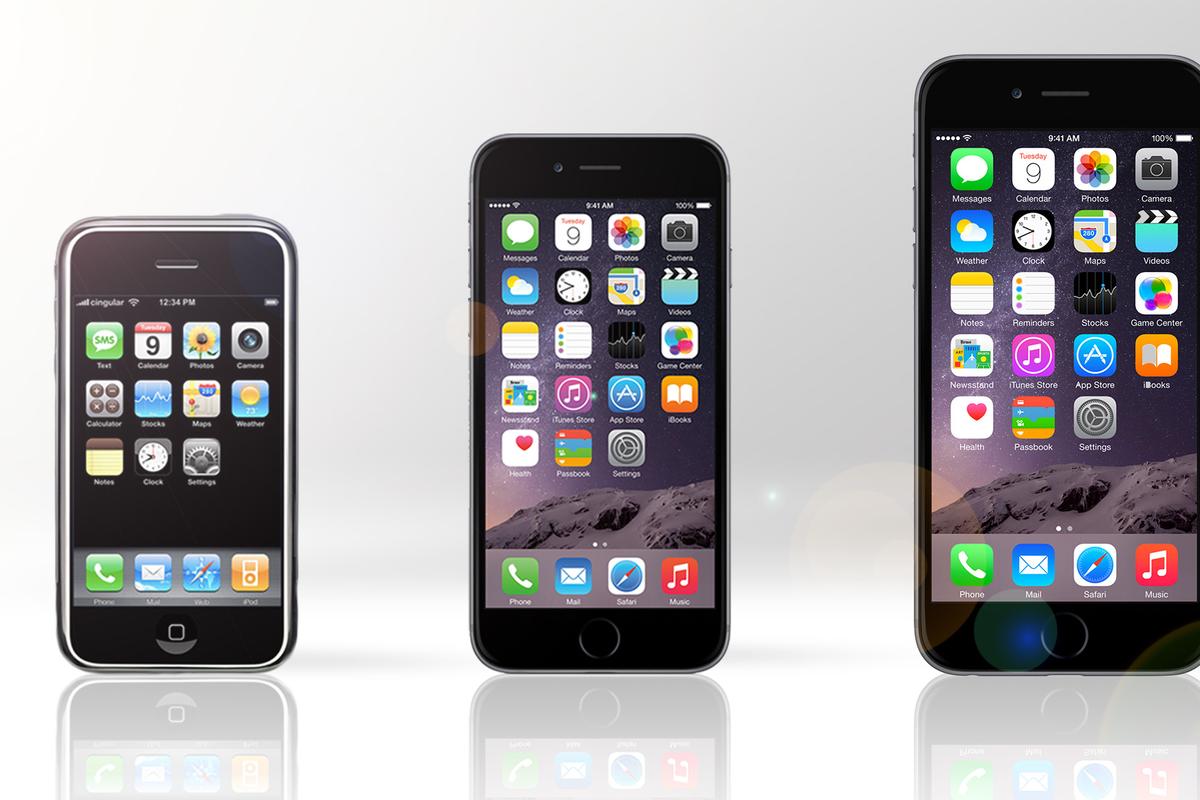Normally we compare smartphones to help you make the best buying decision. But this time we're going to line up the original 2007 iPhone with Apple's latest handsets, the iPhone 6 and iPhone 6 Plus – because, hey, isn't it fun to see how far we've come?
Release date

We're looking at more than seven years of mobile evolution here, so adjust your expectations accordingly.
For some pop culture perspective, the number one Billboard song when the first iPhone hit store shelves was Rihanna's "Umbrella." The number one movie at the US box office was Ratatouille.
Size

If you want an illustration of how smartphones have changed in the last 7+ years, look no further. The original iPhone is tiny even compared to the iPhone 6 – and next to the 6 Plus it's downright puny.
Another standout spec is just how ridiculously thick that first iPhone was. It's 63 percent thicker than the 6 Plus, and 68 percent beefier than the iPhone 6.
Weight

Despite being a much smaller device, the original iPhone is 5 percent heavier than the iPhone 6.
Build
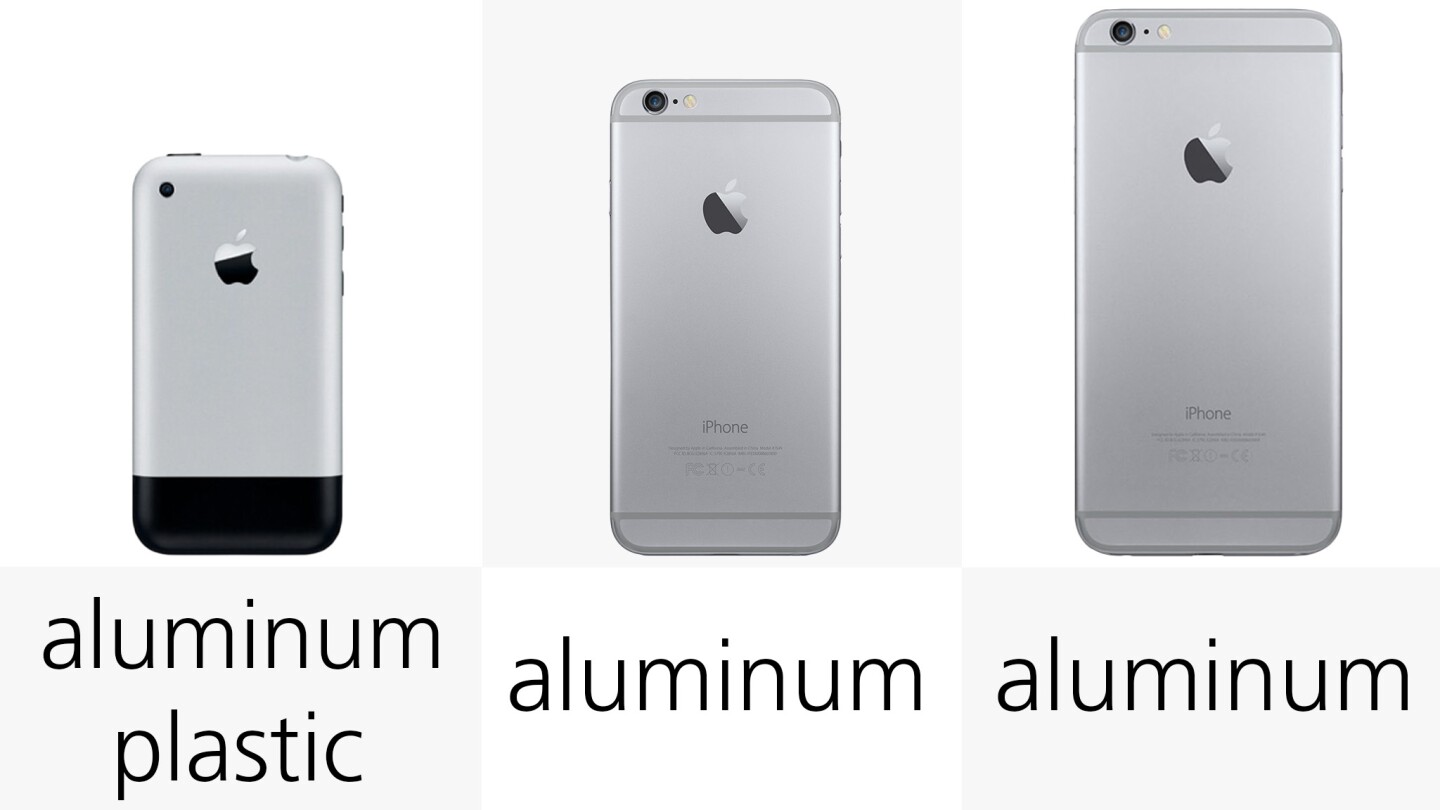
You could say that the three things that best describe Apple products today are "light," "thin" and "aluminum." Back in '07, the company only had one out of three covered.
... though, even then, the first iPhone's backing had a plastic bar on its lower end. For its next two iPhones (3G and 3GS), Apple went all plastic. For the two after that (4 and 4s) it used a glass back with stainless steel edges. From late 2012 to today, it's been all aluminum.
Colors
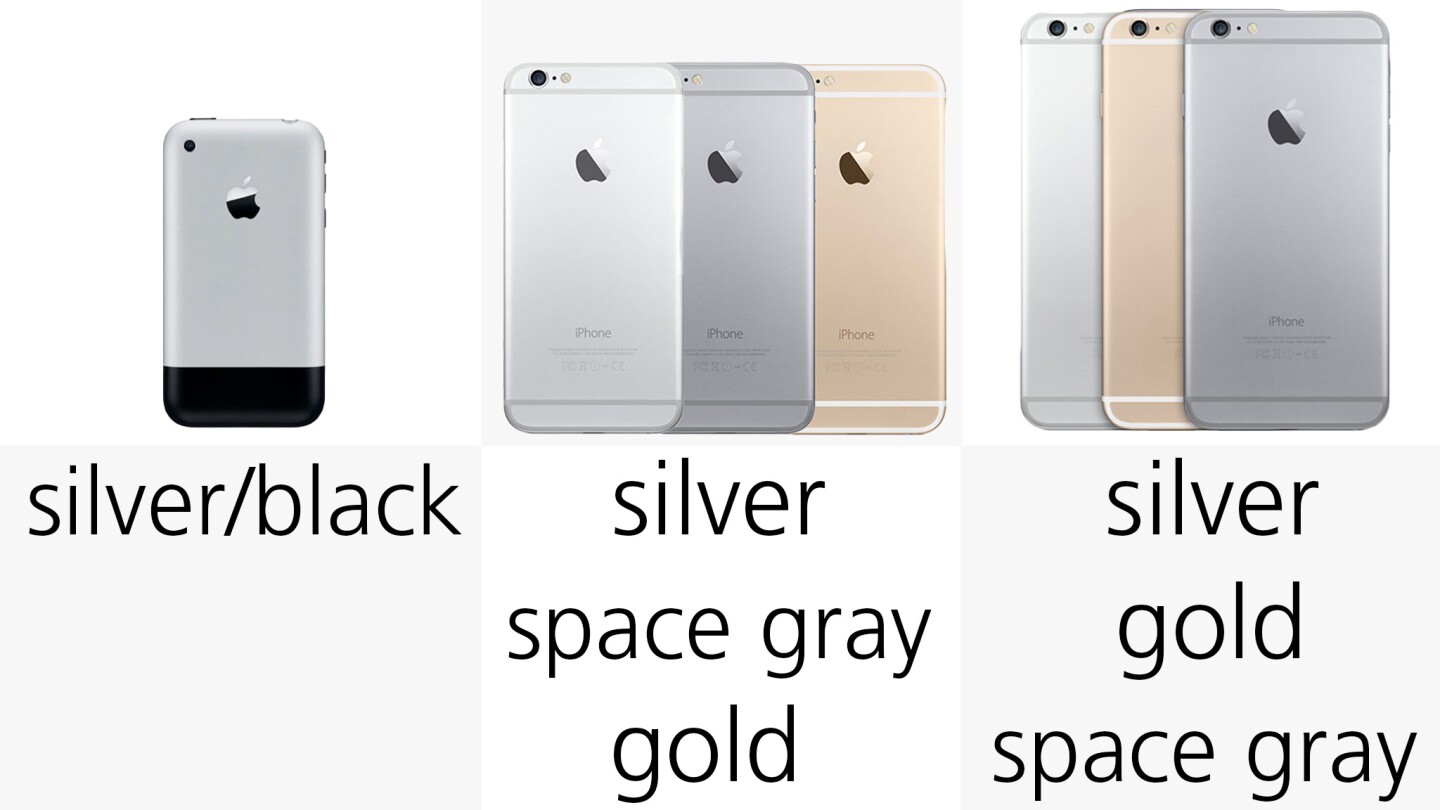
Apple didn't start offering different color options for iPhones until the iPhone 3G arrived (you had the option of buying strange black front/white back options). You couldn't buy an iPhone with a different front color until the white iPhone 4 arrived in early 2011.
Display (size)
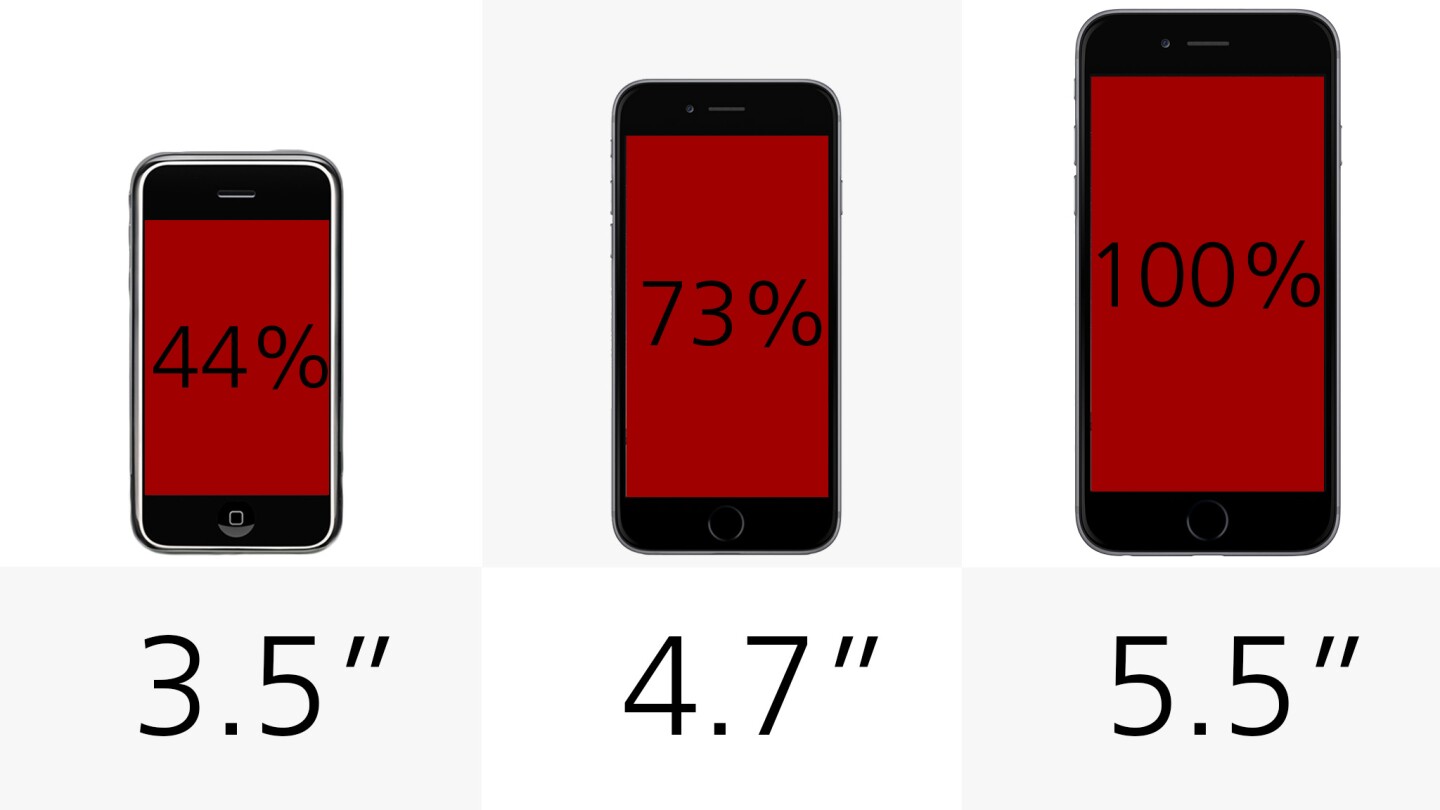
Here's another visual that tells us a lot about the evolution of smartphones. The original iPhone's screen was 60 percent as big as the iPhone 6's – and only 44 percent as big as the iPhone 6 Plus'.
This is one change that didn't happen so gradually though. Apple stuck with the first iPhone's 3.5-in screen until late 2012, and even then it was still a relatively small 4 inches. These latest models gave us by far Apple's biggest leap forward in screen size.
Display (resolution)

Those were some pixelated devices we were staring at in 2007! Apple didn't give us the "Retina Display" (Apple's branding for "sharp enough that most people won't notice any pixels") until mid-2010.
Cameras
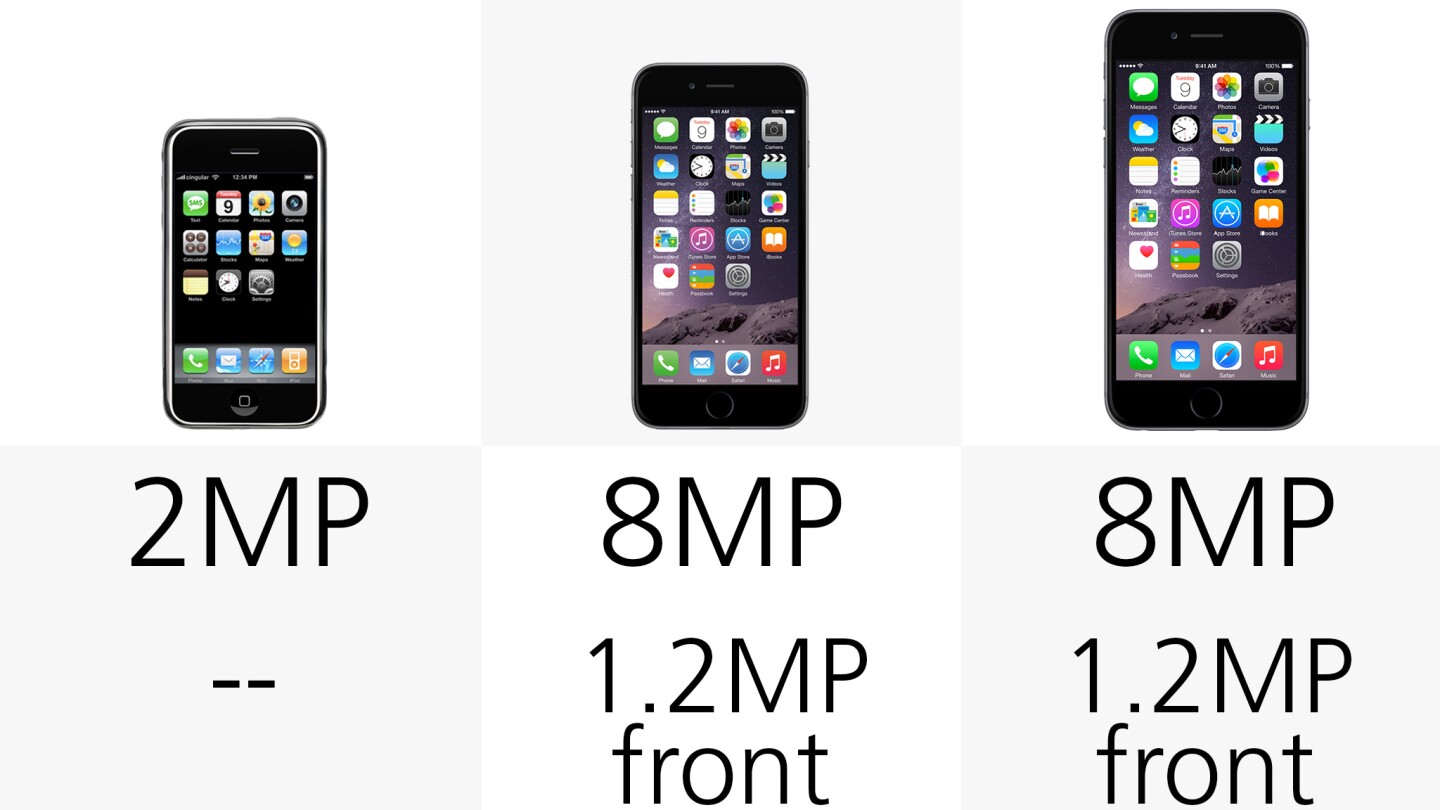
All the first iPhone got you was a 2 MP rear-facing camera. At the time this was considered pretty solid for a phone camera, but you wouldn't want to snap any pics with that sucker today.
Front-facing cameras didn't start showing up until the iPhone 4 in 2010. Today the iPhones not only have much higher-resolution sensors, but they also have dual-LED flashes, good low-lit performance and, in the case of the iPhone 6 Plus, Optical Image Stabilization. That's a lot of ground covered in less than eight years.
Battery

This original iPhone was only rated for about 6 hours of internet use. Today's iPhones are rated for up to 10 hours over 3G or 4G networks and up to 11 hours over Wi-Fi.
App Store

It's easy to forget, but the App Store didn't launch until 2008, after this first iPhone had already been around for a year. It did receive the update then, but for that first year, early adopters were limited to web apps (remember those?).
Chip
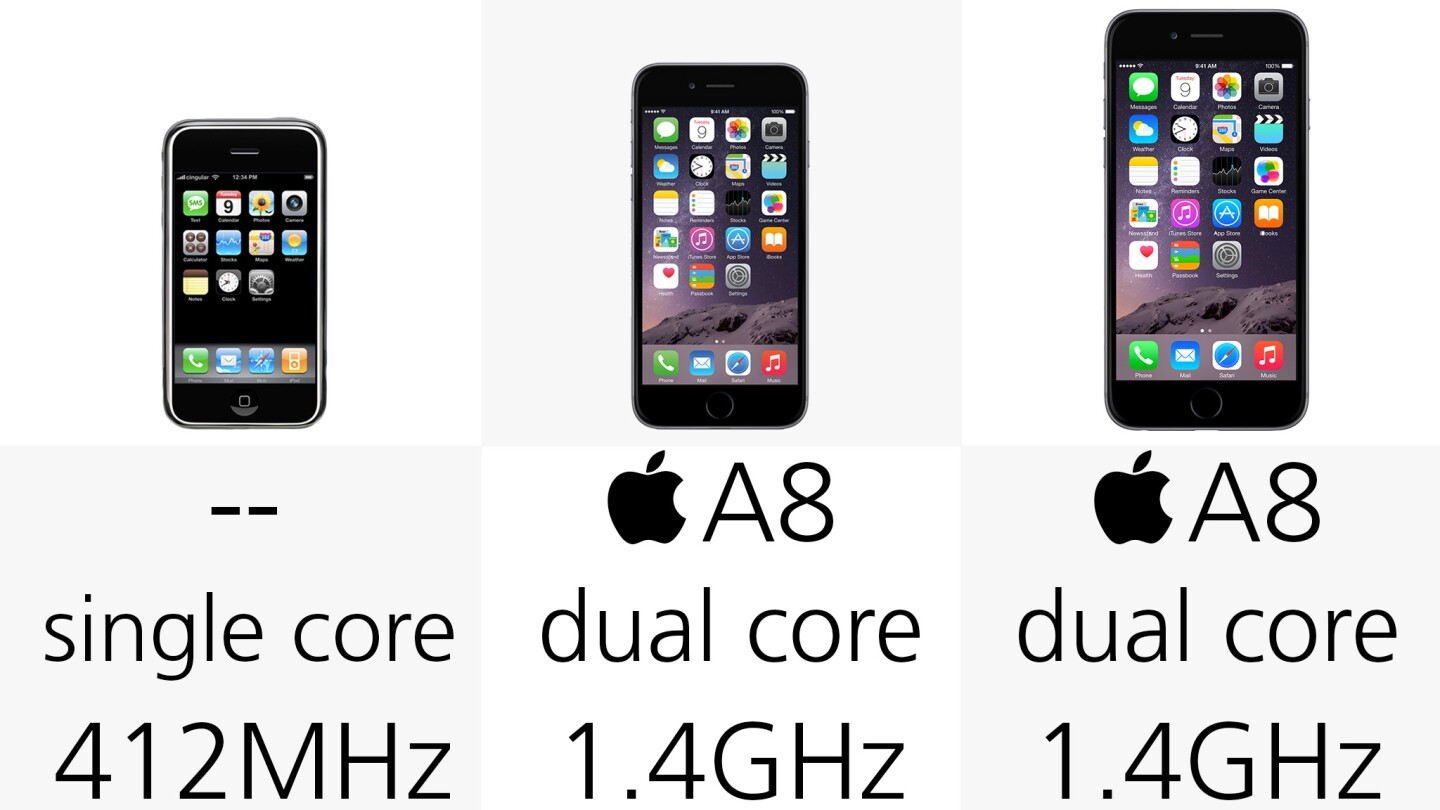
Apple didn't start naming its custom system-on-a-chip hardware until the "A4" found in the iPhone 4. With the first iPhone, we had to rely on teardowns – which told us that it was running a custom Samsung-made processor (620 MHz, but underlocked to 412 MHz).
RAM
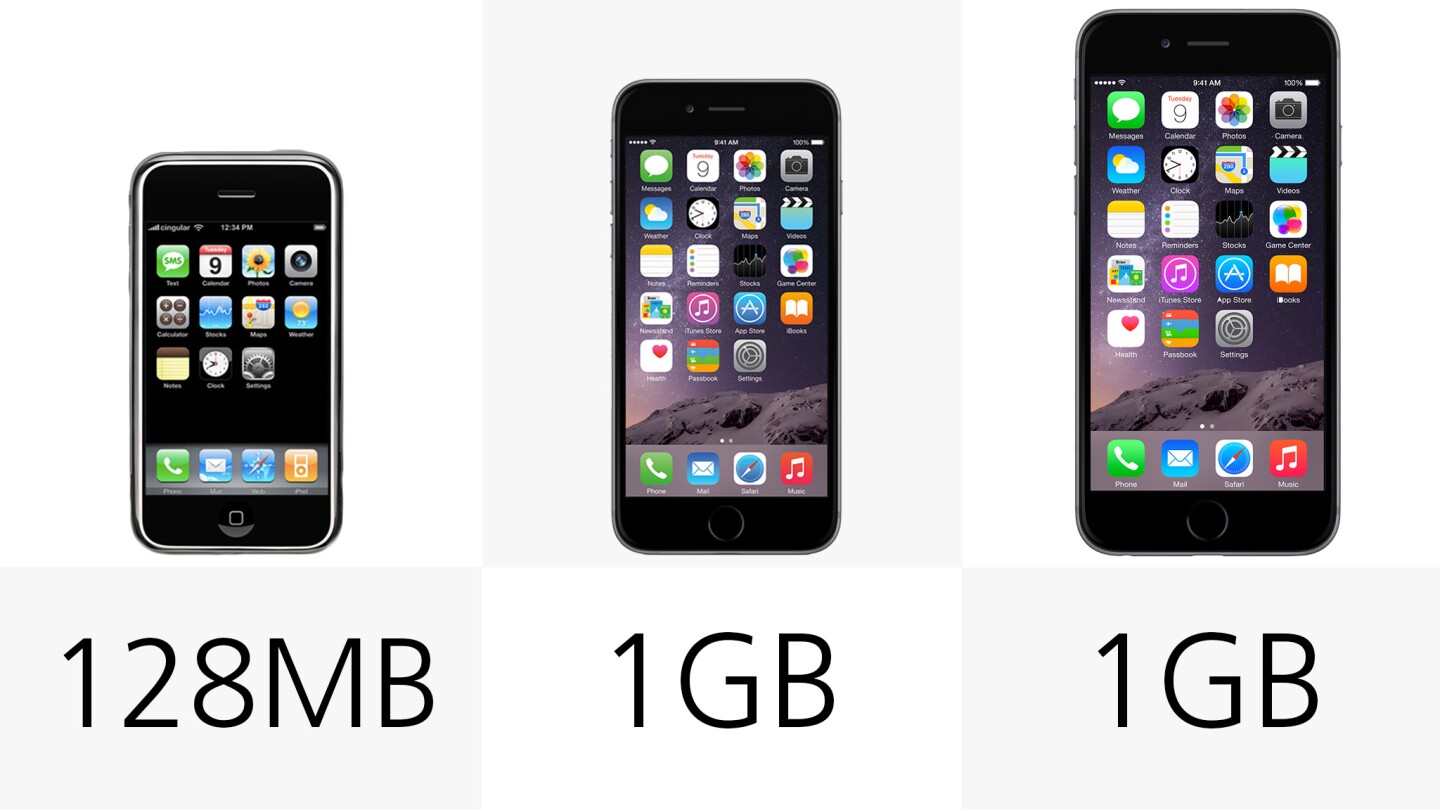
When's the last time you saw a mobile device with 128 MB of RAM? Even most smartwatches today have 4x that.
Storage
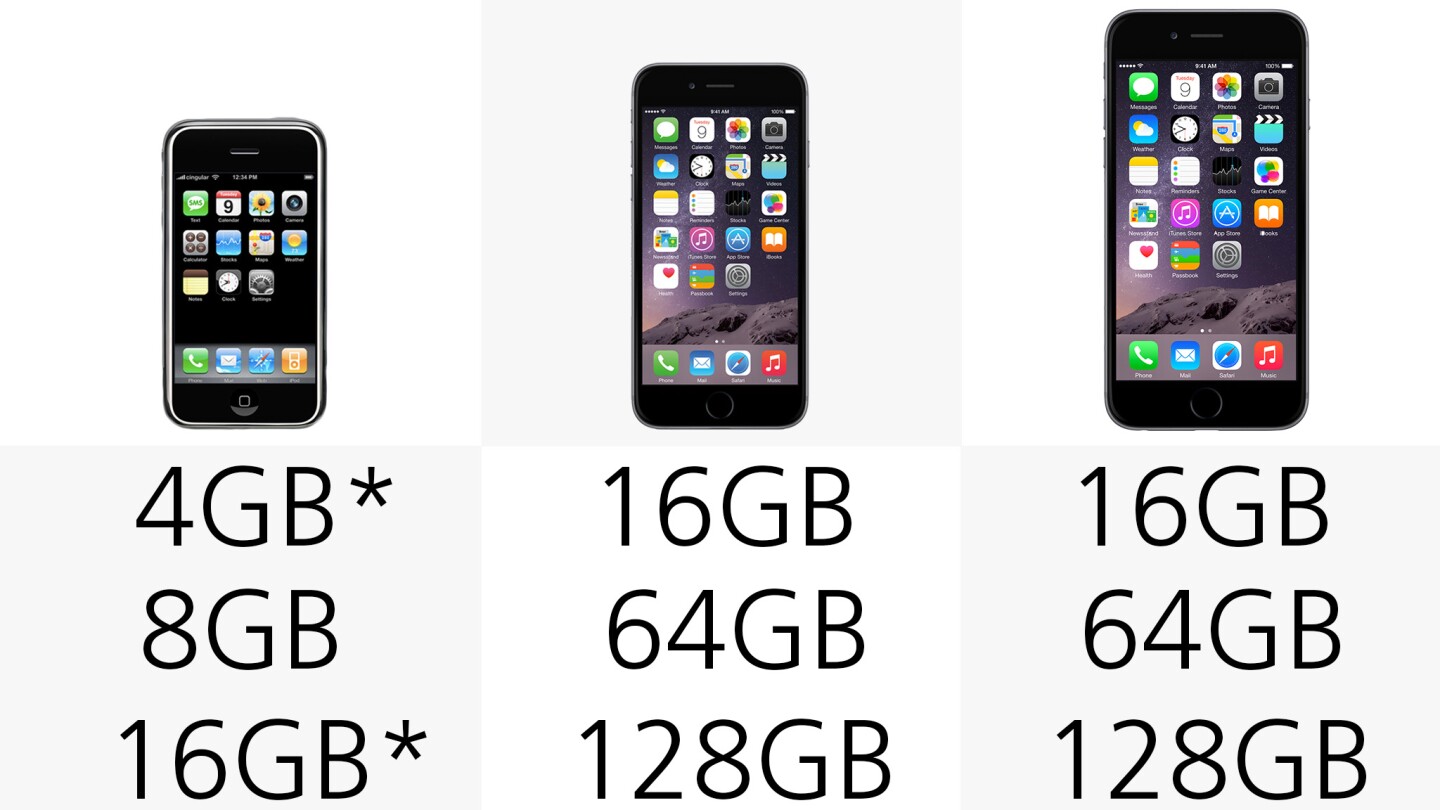
Apple did a bit of a shuffle here during its first year. The iPhone launched in 4 GB and 8 GB options, but the 4 GB model was discontinued a couple months after launch. The company then added a 16 GB option in February of 2008, five months before the second-generation iPhone (3G) launched.
Mobile data

Blazing-fast 3G speeds (ahem) were still a year away back in 2007. For that first year, iPhone owners were limited to painfully slow ~2G speeds.
If you're too young to remember 2G, try driving through rural areas until your phone shows "Edge" in its signal bar. Those are the painfully slow speeds iPhone early adopters paid for.
Touch ID
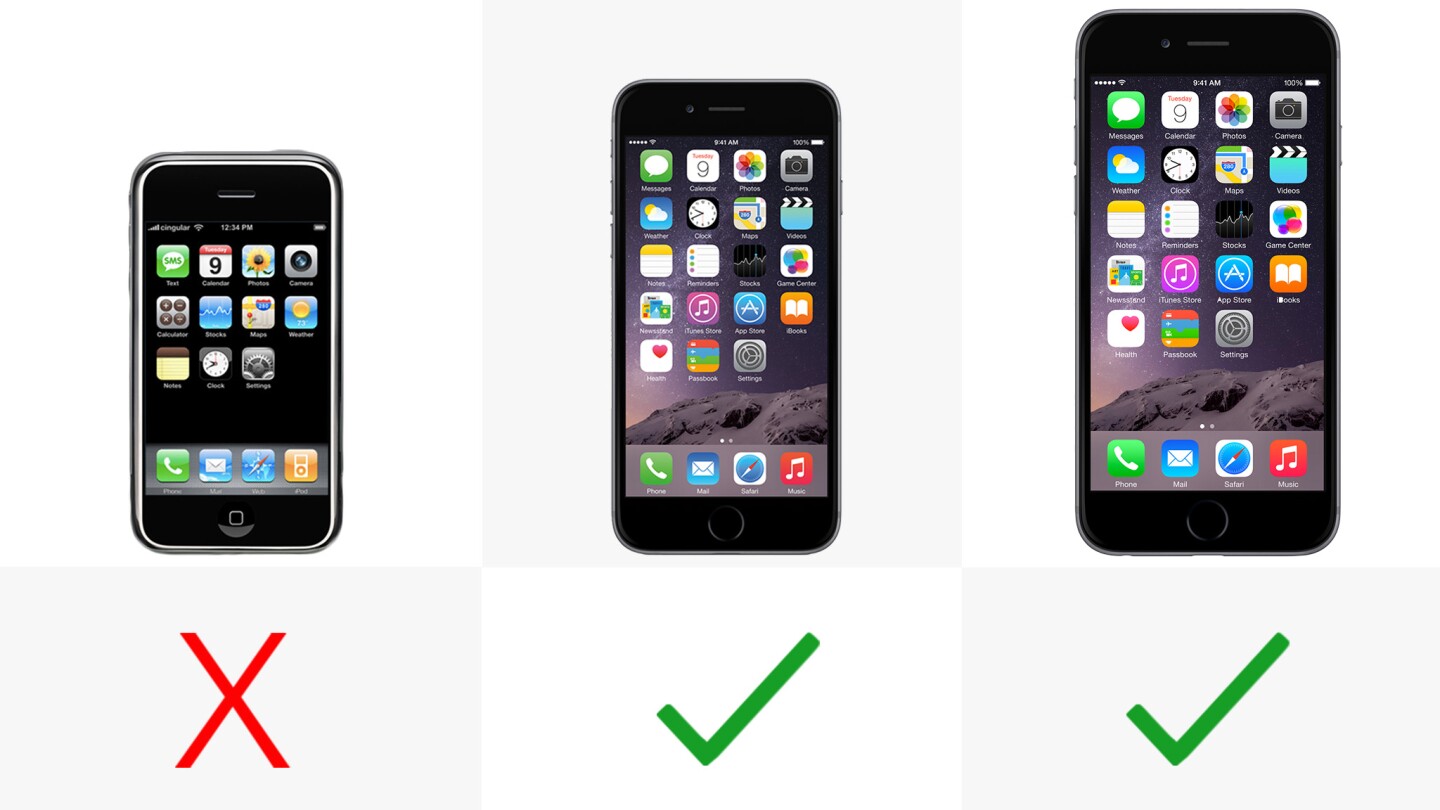
Well, considering the original iPhone didn't have 3G data, an App Store or a camera that would be remotely usable by today's standards ... no, it didn't have a fingerprint sensor.
Software
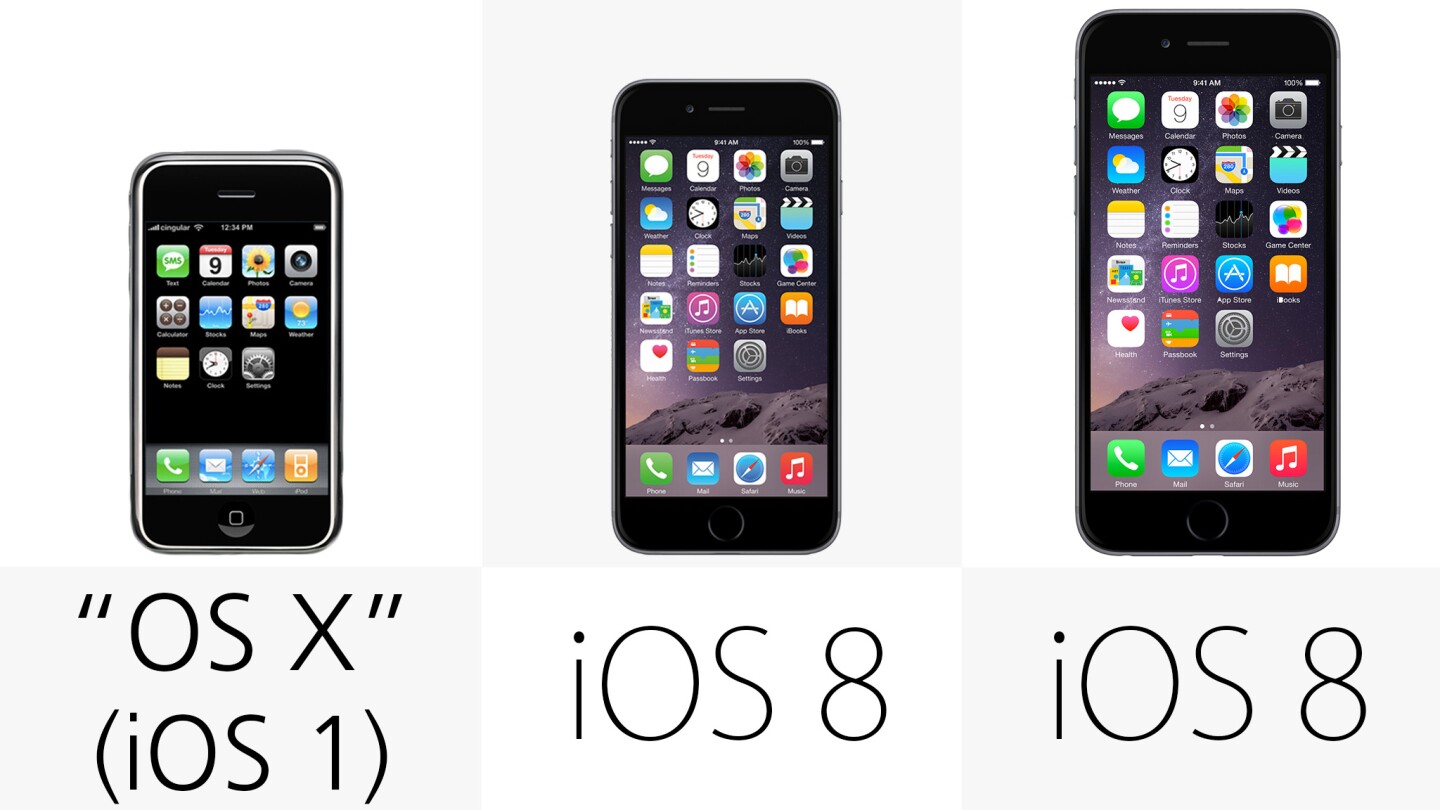
Interestingly, Apple branded the first version of iOS as "OS X." It did share a core with the Mac's operating system, so in a way this made sense ... but a year later Apple re-branded the iPhone (and iPod touch) software as "iPhone OS."
It wasn't until after the iPad launched in 2010 that Apple started calling it iOS – retroactively making that first iPhone's software known as iOS 1.0.
This first iPhone ultimately maxed out on iOS 3.1.3, released in early 2010, a few months before the iPhone 4 launched. If you still have one of these first-gen iPhones lying around, that's the software it will be running today – and forevermore.
Starting price (on-contract)

Holy cow – this is what happens when you're an early adopter and the innovation you're trying to buy has no direct competitors. Apple and AT&T were charging an insane US$500 for the first iPhone – with a two-year contract! And that was only for the 4 GB version: at launch, the 8 GB model cost $600.
When Apple ditched the 4 GB model a couple of months later, the 8 GB iPhone got dropped down to a somewhat more reasonable (by today's standards) $400 – also with a two-year contract.
Starting price (full retail)
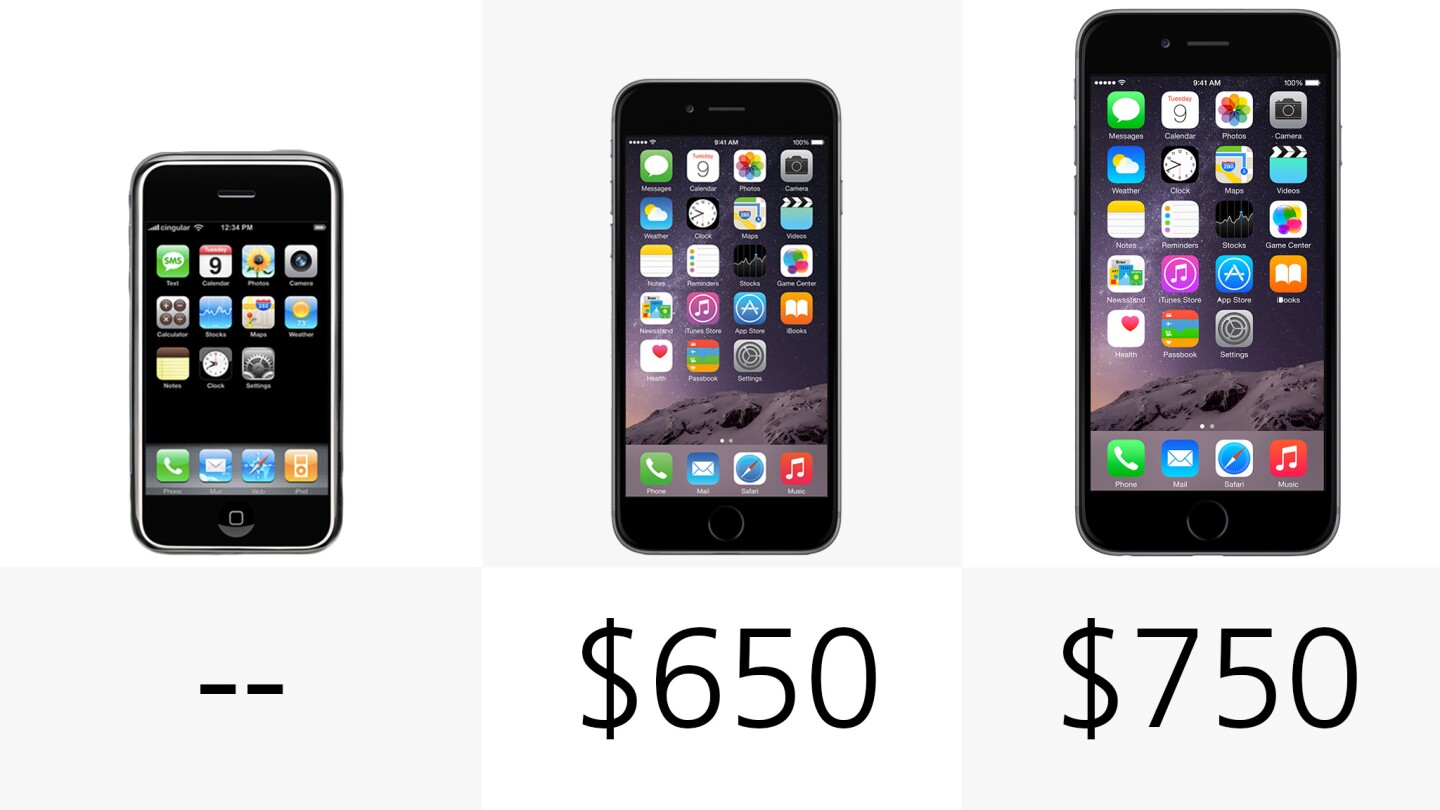
And in case you're wondering, there was no option to buy that first iPhone without a contract. Reports from back in '07 say the 8 GB iPhone was selling for around $1,000 on eBay and Craigslist.
Going back to the original iPhone would be a pretty unbearable experience today, but we still can't overstate how much of a breakthrough it was. Even before the App Store arrived, its multitouch interface was a mobile innovation like no other, ushering in the modern era of smartphones – all of which owe an immeasurable debt to Apple's thick, slow and pixelated $500 on-contract handset.
For a time capsule look at the innovation that was eight years ago, you can read Gizmag's original iPhone coverage from January of 2007 ("knockout," indeed).
Correction: We originally stated that different color options didn't arrive until 2011, but the iPhones 3G and 3GS had models with different colored (white) backs.
